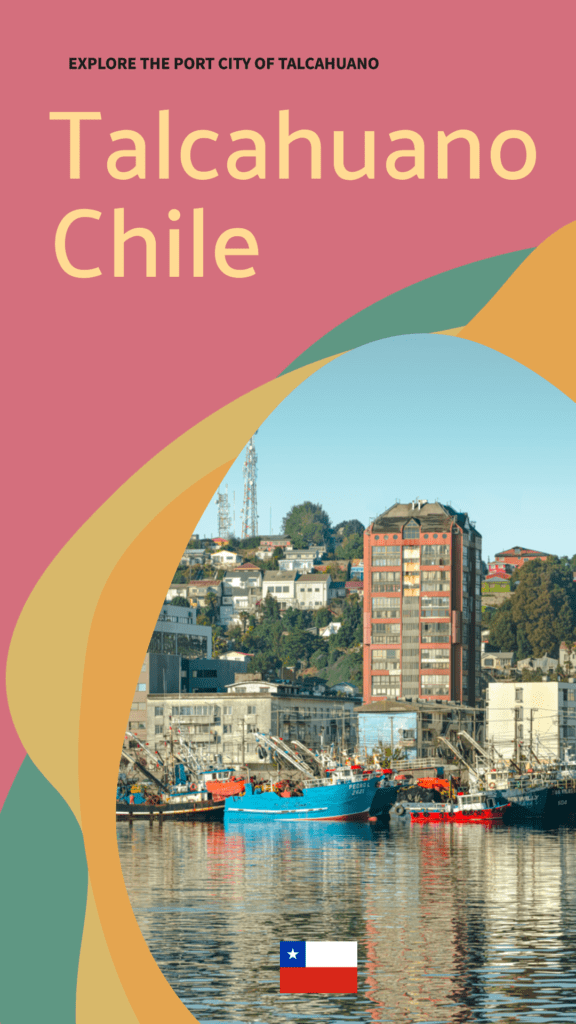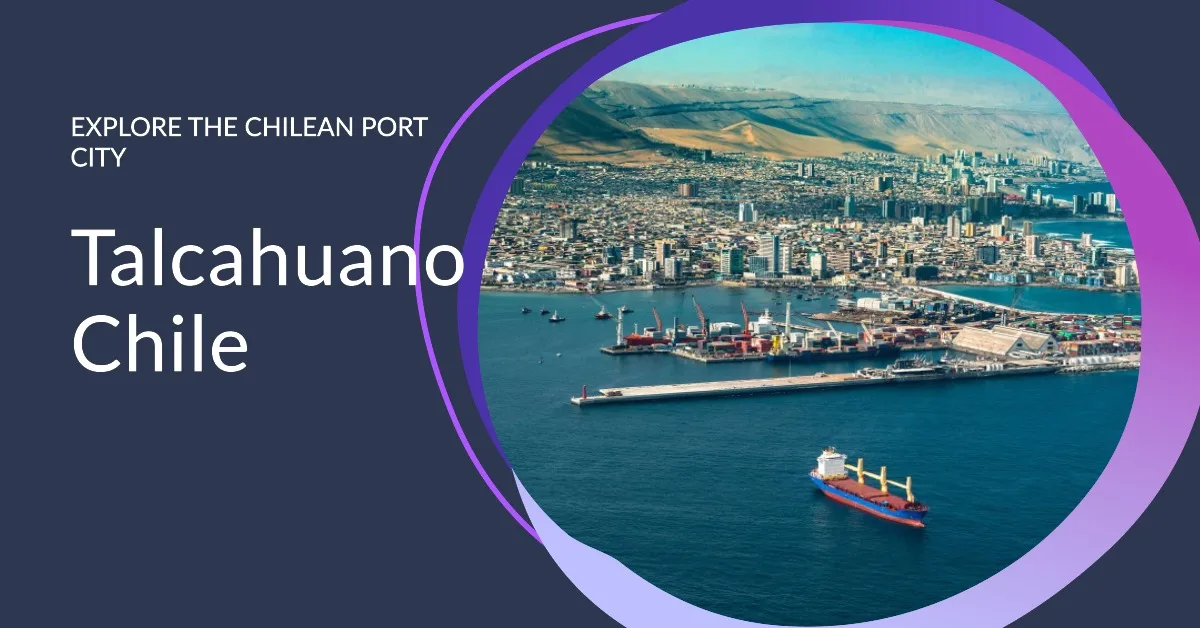Talcahuano, Chile
Talcahuano is a port city on the Pacific coast of Chile, that seamlessly blends maritime charm with historical significance, in the Biobío Region of Chile.
Talcahuano is known for its strategic importance as a major naval base and port, playing a significant role in Chile’s maritime activities.
Onomastics
Talcahuano derives its name from an Araucanian chief, Talcahueñu, who inhabited the region during the arrival of the Spanish. In the indigenous Mapuche language, Mapudungun, Talcahuano translates to “Thundering Sky.”
Brief History of Talcahuano
Before the arrival of Spanish colonizers, the region around Talcahuano was inhabited by indigenous Mapuche people. They had established settlements along the coast and engaged in fishing and agriculture.
The Spanish arrived in the area in the mid-16th century. The natural harbour and coastal location of Talcahuano made it an attractive site for maritime activities. The Spanish established a presence in the region, and Talcahuano became an important port.
In the 18th century, Talcahuano gained military importance. The Spanish Crown recognized its strategic value and established a naval base to protect the coast from foreign threats and support maritime trade.
During the early 19th century, Chile fought for its independence from Spanish rule. Talcahuano played a role in naval battles during this period. After Chile gained independence in 1818, the city became a vital naval and military centre.
In the 20th century, Talcahuano underwent industrial development, particularly in shipbuilding and fisheries. The city’s port and naval facilities continued to be crucial for Chile’s maritime trade and defence.
In recent decades, Talcahuano has continued to evolve as an industrial and economic hub. The city has faced challenges, including the reconstruction efforts after the 2010 earthquake, but it remains an important centre for the Chilean Navy, maritime trade, and various industries.
Economy
Talcahuano embodies Chile’s Productive Development Pillar, serving as a crucial driver for the city’s progress in a globalized context. The city’s advancement is propelled by a diverse range of productive activities, making it an integral hub. From tourism, showcasing marine gastronomy and the bay’s nautical attributes, to robust industrial sectors, trade in services and products, and a strategic logistics platform, Talcahuano exhibits a multifaceted development approach.
The city’s significance is underscored by its status as the primary naval base, housing the historic Huáscar, a Peruvian ironclad ship of British origin captured in 1879 during the War of the Pacific. Talcahuano serves as the operational base for the Chilean submarine fleet and hosts the ASMAR shipyard, further solidifying its pivotal role in maritime and naval activities.
Talcahuano Statistic
| Statistic | Data |
| Founded | 5 November 1764 |
| Declared by | Antonio de Guill y Gonzaga |
| Total Area | 92.3 km2 |
| Elevation | 1m above sea level |
| Estimated Population | 92,843 |
| Official Website | https://www.talcahuano.cl/ |


